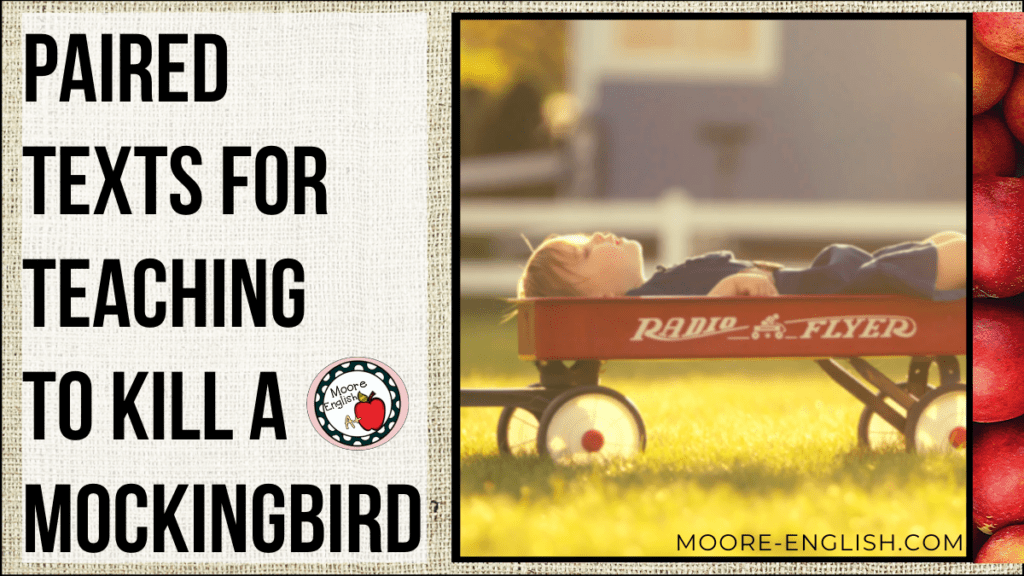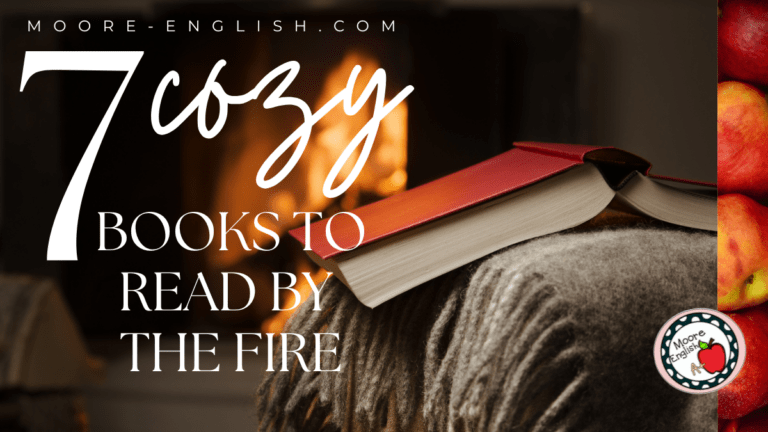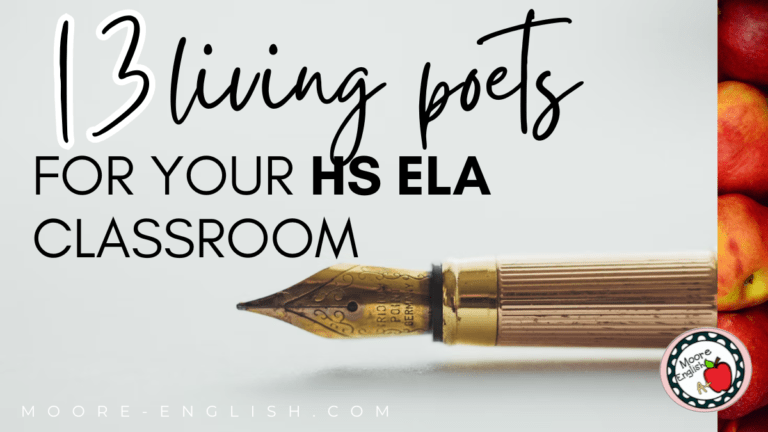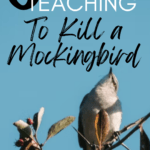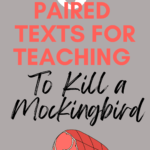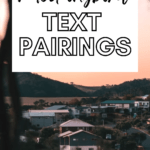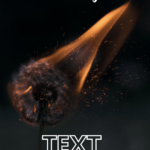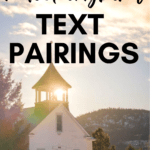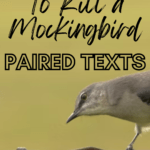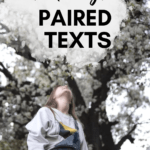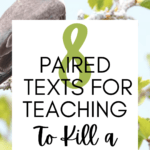As I mentioned in an earlier post, instead of doing a traditional short stories and/or poetry unit, I prefer to teach a novel or drama and then supplement with thematically relevant texts. Here are the texts I pair with To Kill a Mockingbird and the skills I emphasize with each.
This post this post may contain affiliate links. Please read the Terms of Use.
To Kill a Mockingbird Poetry Pairings
Since To Kill a Mockingbird is the first text my sophomores read, this unit is also the first place my students encounter poetry. For this reason, when I select poems for this unit, I look for texts that are thematically relevant. But I also look for texts that help my students build the fundamental skills needed for analyzing poetry.
Paul Laurence Dunbar
1. “We Wear the Mask” and “Sympathy” by Paul Laurence Dunbar. This is often the first poem my students encounter. So this is often the poem I’m using to teach my students the 4 steps for pre-reading a poem. Here are some of the reasons this text is a good introduction to poetry annotation:
- Reliable meter and rhyme scheme. One of the steps to pre-reading poetry is to identify the rhyme scheme. And Dunbar keeps an intentional rhyme scheme with purposeful deviations.
- Empathic punctuation. Similarly, Dunbar’s use of punctuation is varied but deft. Students are able to have a meaningful first experience analyzing his choices.
- Meaningful point of view. Point of view is key to understanding most texts, but the plural “we” in this poem is especially meaningful. From a teaching perspective, this is a great way to introduce students to the idea that point of view can be telling.
Apart from its poetic merits, “We Wear the Mask” is thematically relevant. One of the criticisms of To Kill a Mockingbird is the portrayal of Black characters. “We Wear the Mask” provides some insight into the roles characters like Calpurnia are asked to play. Reading this poem against the scene at First Purchase Church can be powerful.
Additionally, students also read Dunbar’s “Sympathy.” Like To Kill a Mockingbird, this poem uses a bird as a symbol. For this reason, reading this poem opens up a great conversation about synthesis thinking. How do two different authors with two different historical and cultural contexts arrive at a similar symbol? Why this symbol?
Furthermore, the devastation at the heart of “Sympathy” helps students think through Tom Robinson’s fatal decision to run. Before reading “Sympathy,” ask students if they think Tom’s decision makes sense. Ask the same question after reading “Sympathy,” and you will have an extraordinary conversation with students. Read both of Dunbar’s poems here.
Maya Angelou
2. “The Mask” and “Caged Bird” by Maya Angelou
After reading Dunbar’s poem, we also read Angelou’s re-interpretation or adaptation of his work. This opens up a great conversation about the way authors and artists build on one another’s work, finding way to address similar themes and concerns. In particular, this is a poem where I begin to introduce the concepts of tone and allusion.
Similarly, “Caged Bird” makes significant allusions to Dunbar’s work. With this poem, students build on annotation skills and on their understanding of tone. But now we’ve added symbolism and started in on our synthesis skills. At this point, we are able to start building a synthesis map to visualize connections between texts. Read Angelou’s poetry here.
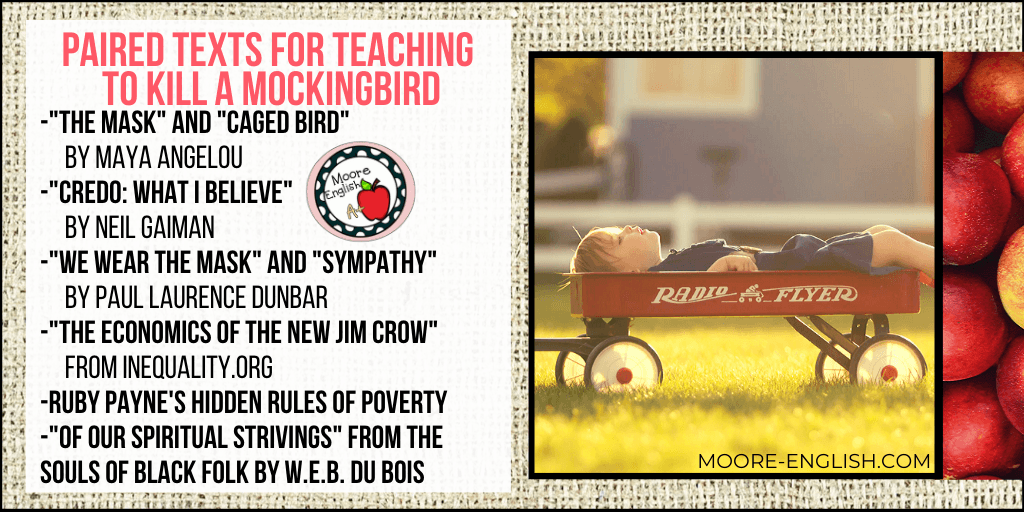
To Kill a Mockingbird and Nonfiction
While To Kill a Mockingbird is fiction, it touches on significant real-world concerns, issues, and themes. For this reason, I always pair the novel with a few pieces of nonfiction. This is also where I introduce my students to the 4 steps for pre-reading informational texts.
First-Person Nonfiction
3. “Credo: What I Believe” by Neil Gaiman
This short piece from Gaiman is a recent addition to my To Kill a Mockingbird unit, but it’s proven to be invaluable. This is the first piece of nonfiction my students read with me. So this is a vehicle I use for introducing the 4 steps for annotating nonfiction. Here’s what makes this a strong first piece of nonfiction:
- It’s nonthreatening. To Kill a Mockingbird is a long novel. And poetry is often intimidating for students. So having a text that seems nonthreatening can be a boon for students.
- Text features! In order to understand this text, students may need some prior knowledge about Gaiman, his purpose for writing, and some common allusions. For this reason, this is a great text to help students find value in text features.
- Paraphrasing and summarizing. Sometimes teachers use these terms interchangeably. But paraphrasing and summarizing are not the same. So I like to teach students the difference early in the semester. We use this text to learn the difference between a paraphrase and a summary. Then we use this graphic organizer that we reference as we write about To Kill a Mockingbird.
Third-Person Nonfiction
4. “The Economics of the New Jim Crow” from Inequality.org
While Gaiman’s piece is in the first person, this piece is in the third-person. So this text offers an opportunity to review points of view. Before deploying this text, read it carefully because it begins with a powerful image. The text helps reinforce the notion that American racism has not ended but that it has evolved and has an economic component. This is also great for discussing how authors use evidence and figurative language to make and support claims.
Inequality.org also has “The Disparate Impact of Climate Change,” which I do not always have time to teach (and it’s getting a little dated). However, this article makes a great point about the connection between class, poverty, and discrimination. My students often miss the class implications of To Kill a Mockingbird, so I value that aspect of this article.
Challenging Nonfiction
5. “Of Our Spiritual Strivings” from Chapter 1 of The Souls of Black Folk by W.E.B. Du Bois.
This is another recent addition to my unit. And it’s also, perhaps, the most complex text students encounter in this unit. Nevertheless, this text is incredibly powerful. In this section of The Souls of Black Folk, Du Bois introduces the concept of “double consciousness.” In other words, he names the very sensation Dunbar and Angelou describe in their poetry. Reading this piece helps students understand Calpurnia and Tom. But this poem also helps students understand the limitations of To Kill a Mockingbird and of individuals who only “read” the world through one lens. Since this is such a complex text, I have heavy scaffolding in place. Check it out here.
Unique Resources
While my students are constantly engaged in traditional texts like poems, nonfiction articles, and novels, there is value in exposing students to alternative texts and resources. For this reason, I suggest these two text pairings. However, when pressed for time, these are also the texts I omit from my unit.
6. Ruby Payne’s Hidden Rules for Understanding Poverty from A Framework for Understanding Poverty
Many of us read Ruby Payne’s work as undergrads. And while I admit that the text has some problems, the chart of Hidden Rules works extremely well with To Kill a Mockingbird. This is a discussion point for my students as they evaluate how the hidden rules work within To Kill a Mockingbird. This is an opportunity to continue synthesis. But this is also another place to work with text features and discussion skills.
7. CrashCourse To Kill a Mockingbird: Part I and Part II
I rarely show these clips to the whole class. But I often use them as discussion stations. I’ll place one clip at one station and ask students to either write or answer questions based on the clip. If you are not able to use these in class, you can post them to your Google Classroom. Be careful about when in your reading you use a clip so as to guard against spoilers. I also have listening guides for both episodes.
What texts do you pair with To Kill a Mockingbird? How do you use this text to teach the intersection of history and literature? What texts should I add to this list? Let us know in the comments!


Photo and clipart credits: Blake Meyer on Unsplash; Caryn Wheeler; and Old Market

